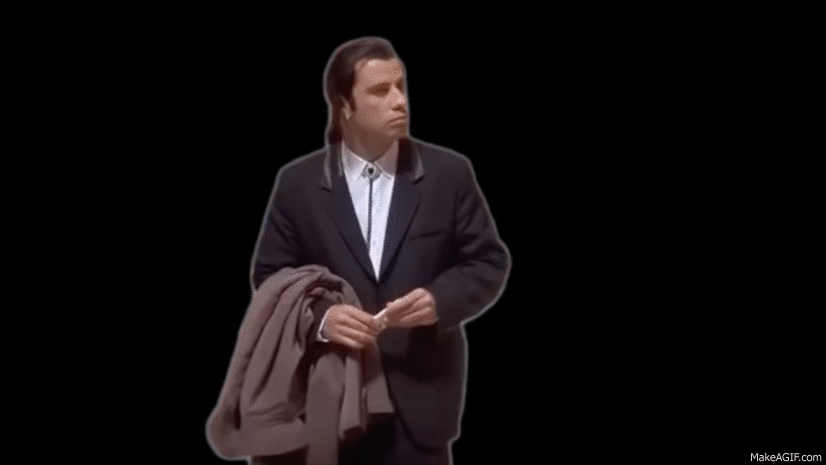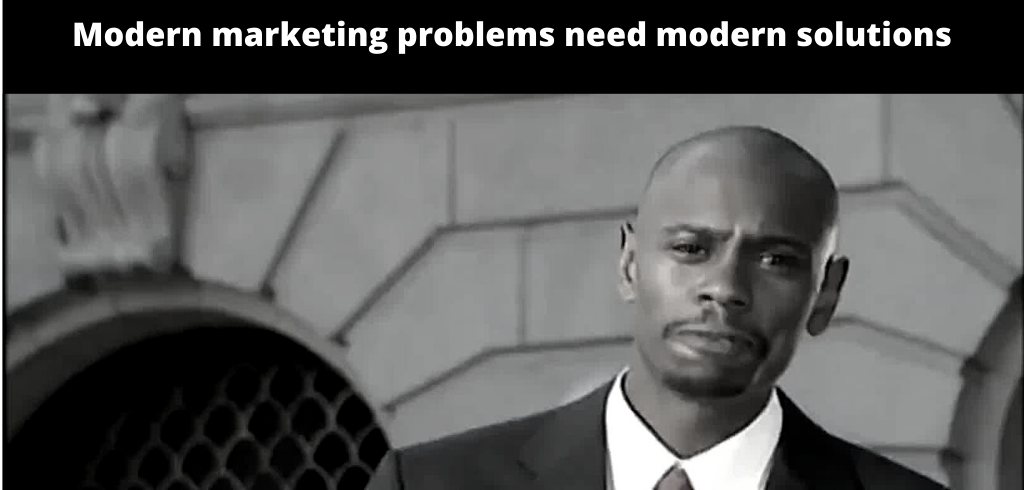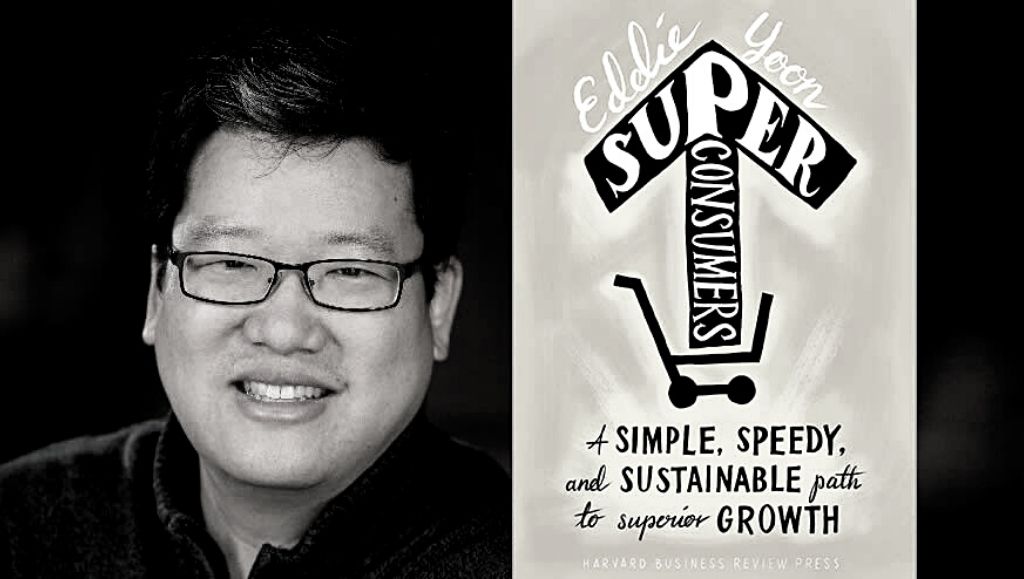A few months back, I wrote a blog where I predicted a few things that will shape the future of marketing.
But by attempting to take a shot at the broader, longer-term forecasts—I missed the opportunity to talk about another futuristic marketing trend that’s already drawing many people’s attention.
I’m talking about the explosive growth of meme marketing in recent years.


Right now, memes are the hottest content currency online. Everything worth publishing on the Internet is worthy of turning into a meme.
Feeling down about your next virtual meeting? Channel your frustration through a meme.
Don’t like Donald Trump’s bluffs? Throw a meme @ him on Twitter.
Too eager to critique a movie but too lazy to write a review? Just meme it!
Today, memes travel faster than news or tweets. Memes are what you will see when you are casually surfing your social media feeds on Twitter, Facebook, or Reddit.
And memes are rising in popularity worldwide.
What is a meme though?
You must have come across one of the many versions of the jealous girlfriend meme on your social media feed—like this one:
A meme is a visual content that communicates an issue alongside a humorous caption.
A meme is primarily an image based off of some cultural reference. But other visual formats like GIFs and videos are also pretty popular in the world of meme-lords.
For example, here’s a video meme that’s sure to have you in splits:
A meme has three major ingredients:
- Pop culture reference
- A humorous slant
- Relevancy
(More on the what and how of memes later.)
People relate to memes better than other forms of content because they are straightforward.
Most memes offer a fresh perspective on a given issue. They pattern-interrupt the beholder’s online attention.
Our brains are hardwired to process visual information 60,000 times faster than texts. And if the visual includes something that has a recall value—like a scene out of the movie The Matrix—we process it even faster and relate to it better.
Many memes go beyond just humor. I see memes as tools that offer a reality check of our experiences in a satirical way.
Like the saying goes—there’s always a grain of truth in every joke. Some memes are straight-up reflections of our realities presented in a hilarious way.
Meme culture has given birth to many social media trends and phrases like “Netflix and chill” or “Hey girl” or that Doge meme phrase “much wow. so amaze.”
People, especially from the Gen Z cohort, love memes because they offer an entertaining analysis of everything—from your childhood trauma to the latest current affairs around the globe.
And because pop culture is the cousin that marketing hangs out with, the former always influences the latter.
In the marketing world, brands are adopting the meme frenzy (often called meme marketing) because memes are fun, easy, and entertaining to create.
Forward-thinking brands know that meme is the language that today’s customers speak and understand. And they are leveraging meme marketing to make their brands look cool, bold, or even goofy.
These days, customers are resistant to the bygone ways of advertising and marketing. They don’t like being marketed to—it makes them feel manipulated and dumb.
Instead, customers these days expect brands to court them, make them laugh, or give them gifts. Today’s customers flock to brands that are relatable, entertaining, and bold.
We trust and buy from brands that interact with them on a personal level—like friends do. We want to have a little fun along the way in our social interactions with our favorite brands.
That’s why memes are so great—they make brands look cool and young. And we all want to hang out and party with the cool and young peeps.
Where does meme fit into your marketing funnel?
Memes are lighthearted jibes at things around you. It’s primarily a top-of-mind marketing asset that helps you build trust and relationships with customers.
Therefore, memes only work for the top of the funnel marketing. There isn’t much debate around it.
Anybody who says anything else doesn’t get memes or is lying.
Meme marketing makes for good social media fodder because they are great at improving brand engagement. In that sense, memes are your social media manager’s best friends.
It helps them drive page engagement, build a community of fun-loving audience, and improve branding.
You can also use memes as visual breaks in content marketing assets like blogs and videos.
Twitter and Facebook audiences love memes—but that’s a given.
I personally believe brands should make extensive use of memes to cut through the dry noise of boring—and sometimes tensed—social media platforms like LinkedIn.
A lot of LinkedIn purists say that sharing memes or GIFs takes away the essence of LinkedIn as a social media platform for business networking. I don’t buy that charade because I think even the stuffiest business circles can use a dash of humor in their daily lives.
LinkedIn is turning into this conformist echo chamber where users showcase the polished side of their profession and exchange a deluge of motivation-porn.
While there’s nothing wrong in that, there’s definitely more room in LinkedIn for us to share other variety of content like memes—because nothing bursts an echo bubble like a candid meme.
Meme marketing works on LinkedIn because they are counter intuitive—nobody expects them.
What does it take to make memes?
Until a few months back, I used to think it takes a professional memer to make memes.
After all, creating a meme is like coming up with a joke—which is not something everyone can do.
But I have changed my mind since last May when I and my co-host Yaag decided to create memes as part of our strategy to promote our The ABM Conversations Podcast’s page on LinkedIn.
Since then, I have realized that anyone with a sense of humor can be a memer—which includes most of us. That’s why the barrier to entry in the meme world is low.
We began the #ABMemes campaign in mid-May with the clear intention to break through the clutter of LinkedIn’s fuzzy content stream.
As of this writing, we have posted about 20 memes as part of the campaign. Honestly, the campaign has seen its peaks and valleys.
Most of our memes have gotten an average of 500 impressions while a couple of them have gotten over 36 likes and more than 3K impressions!
It might not sound like much, but it’s pretty good for a brand page that we started in May. FYI—it’s tough for a brand page to get good traction on its content compared to individual LinkedIn profiles.
The best thing about using memes in your marketing is that it’s absolutely free and fun to do. Making people laugh is perhaps one of the most difficult yet most rewarding experiences. So you will enjoy thinking and making memes as much as people would after seeing it.
It’s a skill which, once you acquire, never goes away. Once you’re a memer, you start looking at every visual content around you as a blank template for your next meme idea.
Your brain reprograms itself into a meme-generating machine. It’s fun. 🙂
Here is what we have learned about memes based on that campaign exercise.
Like I mentioned earlier in the post, you need three ingredients to create a good meme:
- Pop culture reference
- A humorous slant
- Relevancy
Let me explain the process we took to create new memes by combining these three ingredients.
1. Use a pop culture reference
For people to like your meme, you have to make sure it’s relatable to the masses. Use references from popular culture that your audience will get right away.
These cultural artifacts can be from the movies, political photo-ops, viral video screenshots, vintage ads, and almost anything that has the potential to fit into multiple meme contexts.
The more popular your reference, the better people will relate to it.
Thankfully, the Internet is a very small place which helps you in this cause. A content usually becomes a pop culture symbol and earns a recall value when it passes across the various circles of the global village again and again.
This is also the reason why most memes recycle the same set of content templates. Memes are based on the same core premise applied to different contexts—like a famous still from the Harry Potter movies or an amusing quote from a celebrity that made global headlines.
Here’s an example. I haven’t watched Pulp Fiction or The Lord of The Rings, but I’ve seen so many memes based on these movies that now if I come across a meme based on them, I get the joke!


However, this also cuts memes’ lifespan short due to the law of diminishing returns. Just like how a joke doesn’t hold the same value after you hear it once, memes have just one opportunity to make an impact on your audience.
Sometimes a meme becomes so viral it exhausts its shelf life sooner than the average memes. Hence, they end up becoming #dankmemes—overused memes that circumnavigate the globe to the point of being stale.
My suggestion to you is—don’t repost the same meme multiple times to the same set of audience. It puts them off and makes your brand’s engagement style look lazy and unoriginal.
Don’t be afraid to create your own meme templates from scratch. You don’t have to go crazy with the graphics or the photo quality. If you have noticed, most memes have questionable taste in image quality and font styles.
That’s intentional. The more authentic the meme’s photo quality is, the better it is because it keeps the message raw.
2. Take a humorous slant
A meme without humor is like a joke that doesn’t make anyone laugh (except the person saying it, perhaps).
You get an A for effort, but if your meme doesn’t make people grin, scoff, or guffaw—you fail.
And this happens more often than you realize. Many brands assume that meme marketing is taking an empty meme template, slapping a quote or a phrase on it, and voila—they achieve comedy.
That’s not how you meme. A meme is not like creating an illustration for your blog. A joke, a good-humored satire, or a self-deprecating jab is at the heart of a good meme.
This means having an appetite to make jokes on your own brand, your fraternity, or something mainstream.
But here’s the deal. Don’t force a joke if it doesn’t come naturally to you. Meme-making is an acquired taste—it will come to you by practice.
A lot of memes out there are not ROFL-level, hilarious content anyway. They are simple jokes turned into visuals that make people chuckle, like, and share.
You don’t have to be the biggest clown or hire a full-time person to create funny memes. If you don’t have in-house talent for making memes, that’s okay. Find memes that might not promote your brand directly but that resonate with your niche audience.
Memes don’t have copyright restrictions. You can find plenty of ready memes or templates on websites such as Pixmeme, Imgflip, etc.
3. Keep it relevant
When you are a brand, everything you do as a company adds up to your marketing and promotion.
But the more relevant your engagement content is, the better your chances of improving your business.
So make memes that are relevant to your audience. If you post memes that are funny but not related to your niche, you might get the wrong kind of engagement.
Imagine the horror of unwittingly positioning your brand as a parody account on Twitter when your memes attract the wrong kind of audience to your page. This won’t bode well for your long-term marketing.
Here’s another way to think about making your memes relevant to your audience. Nothing is better than you somehow weaving your brand in the memes.
Take a look at this meme from Chex Mex:
Check out the other funny brand memes that followed soon after Chex Mex published the above meme.
Here’s another example from the Indian food delivery app Zomato:
When you create branded memes, just make sure you keep it funny without trying to overly promote your products to customers.
Brand promotion shouldn’t take away the humor from a meme.
Your memes should make people stop scrolling their social media feed, make them type 😂😂😂😂😂, or make them share it with the world.
Memes are not for everyone
A word of caution: memes can be divisive and offensive. If you are not sure about memes, test the waters gently with your audience.
If they like your memes, it will reflect in your engagement analytics. If they don’t like them, they will most likely say so directly.
Another way to avoid making your memes offensive is to use websites like Know Your Meme to understand a meme’s original context before you publish a meme on your social media handle.
Some oldfags say that memes work best for B2C audiences and not so much for B2B customers. Again, I think it’s one of those pretentious pomps of the business world that likes to ramble on topics like productivity, ROI, and bottom line—all the time!
Use memes to exchange good-humored interactions with your customers and delight them. Who knows—your meme might brighten someone’s day!



it is a really amazing blog with funny memes. I think the same, meme marketing is really effective and engaging for audience.
[…] Source […]